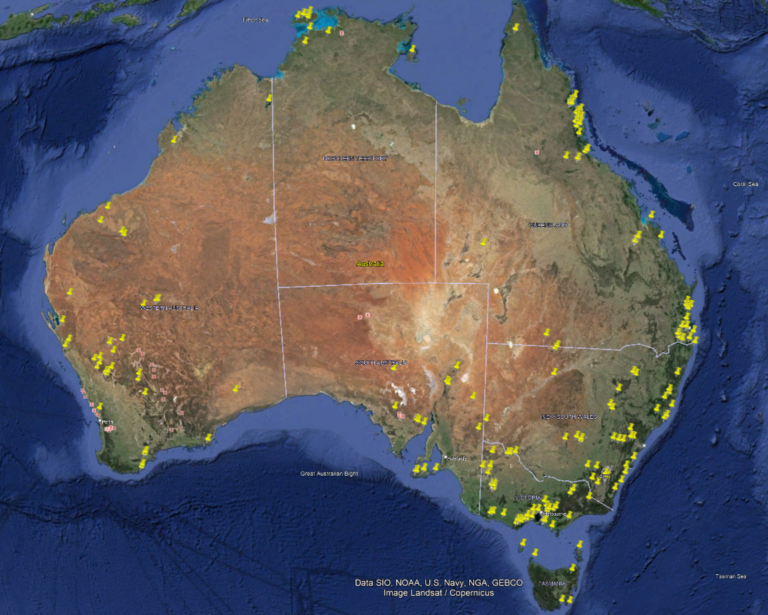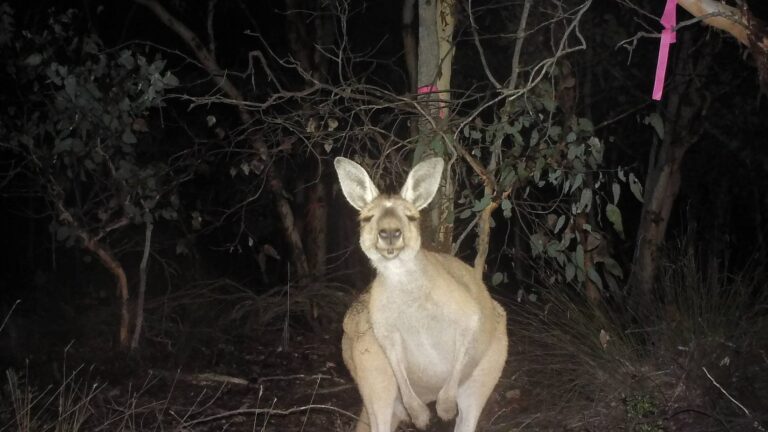
This project aims to transform Australian vertebrate research by producing a digital Wildlife Observatory that assimilates currently siloed camera trap data into a user-friendly continental database. Cameras are widely used to study and monitor threatened and invasive vertebrates, but produce Big Data that are difficult to store, process, and analyse. Therefore, significant data are ‘lost’ in the system.
The Wildlife Observatory of Australia expects to overcome these key issues, enabling unprecedented knowledge of wildlife distributions and population trends. This should produce a step-change in the timeliness, scale, and depth of evidence available to managers and researchers as they respond to pests, bushfires, floods and climate change.
The Wildlife Observatory of Australia will:
- Coordinate and operate a continental-scale digital Wildlife Observatory that delivers new products and services for biodiversity assessment and auditing
- Build a standardised national camera trap monitoring protocol and meta data collection App
- Leverage the contribution of wildlife images from >50 custodians to enable processing of derived datasets crucial to research, decision-making and policy-making
- Enable robust wildlife monitoring and measuring of conservation impact, including applications for species threat assessment, National Recovery plans and contribution to international agreements
- Drive new science in long-term environmental change and evaluation of management outcomes for biodiversity
- Provide timely evidence of ecosystem function and triggers for preventative and responsive action

Who we are
We are a consortium of Australia’s leading wildlife researchers and practitioners. Our unifying goal is to achieve efficiencies and higher impact results through coordination and collaboration. We also agree collaboration can be fun.
- Matthew Luskin: CI of the Ecological Cascades Lab at the University of Queensland (UQ) and a Discovery Early Career Researcher Award (DECRA) fellow devoted to camera trap data synthesis. He has 15 years of camera-trapping experience, mostly as part of the global camera trap network set up by the Smithsonian Institute, including leading collaborative projects in six countries, and some notable work with National Geographic on Sumatran tigers. Much of his current work focuses on developing analytics for cross-site and long-term syntheses projects.
- Siddeswara ‘Guru’ Guru: Leads the biodiversity data management efforts for TERN and has been involved in prior attempts to collate and store Australia’s camera trapping data. He knows all the relevant people at Atlas of Living Australia, the Australia Museum and the government. He lives and breathes big biodiversity data.
- Emma Spencer: Runs the WWF-Google initiative called “Eyes on Recovery” (from the megafires) and coordinates the Australian Wildlife Insights rollout, which includes >1 million photos from >10 participating organisations in 2 years.
- Tom Bruce: Postdoctoral fellow at the UQ Centre for Biodiversity and Conservation Science and has 10 years of camera trapping experience in Africa, Eurasia, and Australia. His PhD at James Cook University focused on large-scale camera trapping synthesis of predators across Australia’s Wet Tropics.
- Paul Meek: Head of camera trapping for New South Wales Department of Primary Industries Invasive Species Management and has authored a variety of publications on best practices for camera trapping in Australia, including many textbooks and handbooks familiar to all camera trapping researchers and practitioners.
- Glenda Wardle: Glenda Wardle is a Professor of Ecology and Evolution at the University of Sydney (USyd), co-lead of the Desert Ecology Research Group, expert in the design and coordination of national monitoring programs including wildlife cameras and other technologies, ecoinformatics data standards, and publishing of long-term ecological data. Wardle collaborates with governments, TERN, NGOs, CSIRO and industry to support ecosystem monitoring.
Our goal
WildObs has one over-arching goal:
Equipping Australia to address our most pressing wildlife questions with robust data and analysis tools.
We were largely caught flatfooted when the megafires hit and had to scramble to initiate brand-new projects to assess impacts and track recovery. In the future, we can be ready to resample existing long-term monitoring sites using a standardised protocol, avoiding a time lag between an unpredictable event and measurement of the effects on wildlife communities. Many terrestrial animals can be efficiently monitored with camera traps, and there is a government-funded organisation already committed to hosting time-series biodiversity survey data (NCRIS-enabled TERN).

Key documents
Information about the WildObs project will be available for download soon.
Acknowledgements





Contact
To enquire about the workshop timetable or any other topic related to WildObs, please email wildobs@uq.edu.au.






